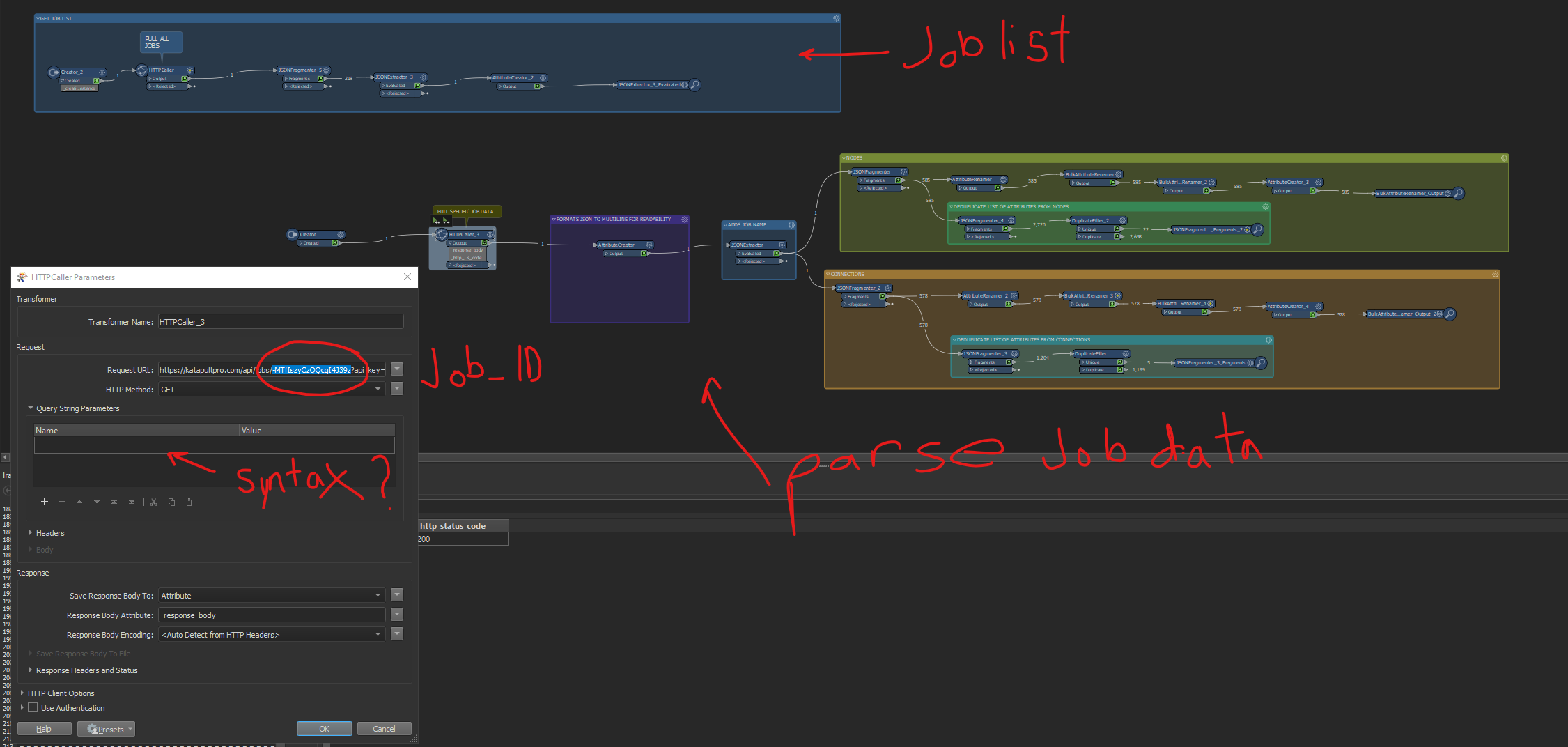I have the first two pieces worked out thanks to some support from our community. Thanks again to @jdh for the support yesterday with JSON parsing.
My workbench features two API calls.
- GET JOBS LIST
- GET JOBS DATA
They both work, but GET JOBS DATA is currently hard coded for one job.
I'm trying to loop through features within an attribute (JOB_ID) so that the GET JOB DATA API call can be looped against the JOBIDs from the JOBS LIST.
How can I use looping to iterate a list of features into that API call?
Thanks in advance for any guidance you can provide!

Best answer by jefejiraffe
View original








